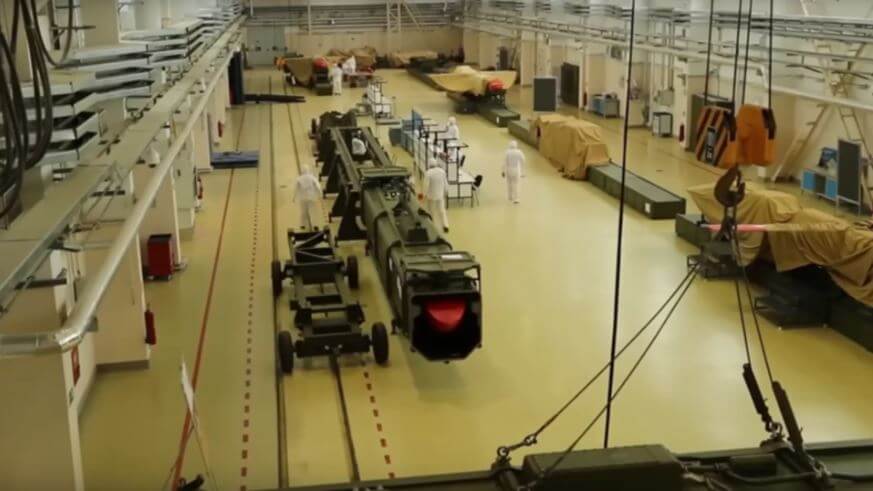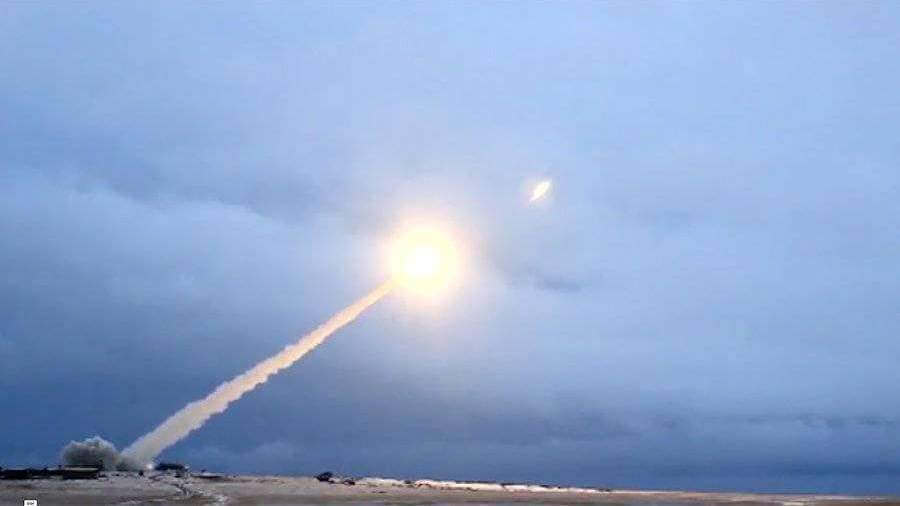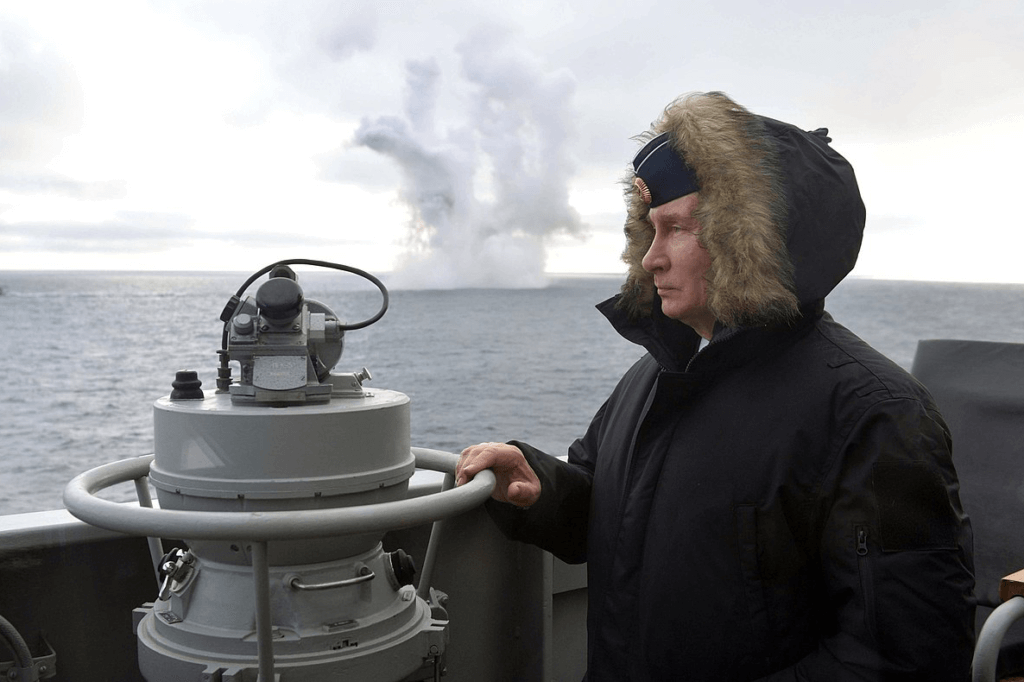
Putin’s Russia has done it again. Keeping the banner of inventing the most unusual weapon systems aloft, they have now invented the world’s very first nuclear-powered cruise missile. You can appreciate how difficult it was to develop this missile by the fact that since 2017, some 14 tests of the missile have been unsuccessful and probably there was a nuclear radiation accident at the testing range at Nyonoksa in Arctic Russia (Novaya Zemlya archipelago) in August 2019. Yet, the legendary Russian tenacity and perseverance, a legacy of the Soviet era, never gave up.
The Burevestnik cruise missile is the last in the series of the six Russian ‘super weapons’ or ‘doomsday weapons’ promised by President Putin in 2018. They include Sarmat/Satan-II ICBM, Avangard Hypersonic Glide Vehicle, Zircon Scramjet Hypersonic Anti-Ship cruise missile, Kinzhal Hypersonic Air-Launched cruise missile, and Poseidon nuclear-powered unmanned underwater vehicle/drone.
What Makes It So Deadly?

Theoretically, a nuclear-powered cruise missile could keep on flying indefinitely for years altogether without needing any fuel at all—just like nuclear submarines and aircraft carriers! Once it becomes possible to apply this nuclear-propulsion technology to commercial airliners, air travel would become practically free of cost as you won’t need any hydrocarbon fuel. No fuel surcharges thereafter!
Nuclear-powered and nuclear-tipped cruise missiles could be kept constantly airborne in one’s airspace the moment tensions build up (thus obviating the necessity of a detectable ICBM launch, aggravating the tensions dangerously to flash point) and then could be directed to their targets under controlled manoeuvrable flight. Ballistic missiles, once fired, fly on a predictable parabolic trajectory calculable by standard equations of projectile motion and hence can be countered by anti-ballistic missile defences. James Hockenhull, UK’s Chief of Defence Intelligence says that the missile has a ‘near indefinite loiter time’ and its ability to attack from unexpected directions under human control makes it immune to any anti-ballistic missile defence system. This has sent a chill creeping down the spine of the West, and a visibly frightened Western media has started assailing it as one of the most threatening episodes in the new round of the nuclear arms race.
The Burevestnik Cruise Missile

NATO has given the 9M730 Burevestnik (meaning Storm Petrel, a sea bird, in Russian) an interesting name, the SSC-X-9 Skyfall. Skyfall was, incidentally, the name of James Bond’s childhood ancestral home in the film (2012) of that name, set in the barren, dreary, desolate, depressing landscape of the Scottish Highlands with just one old faithful gamekeeper keeping it ever since his parents had died in an accident when Bond was just eight years old. Bond returns to the family estate one last time for an epic confrontation with the villain Sylva, a former MI6 colleague of Bond. The Skyfall explodes to rubble in the end with Bond muttering, “I always hated this place”. Perhaps it was a subconscious desire to see the explosion of the Russian missile that provided the motive for giving this name!
The Nuclear Threat Initiative, a Washington-based security organization, had predicted a decade in 2019 for its development. Even in January 2021, the US National Air and Space Intelligence Center’s unclassified report on missile developments was sceptical about the missile ever entering service. So much so for their assessment of Russian genius!
On November 21, 2019, while presenting posthumous awards to the families of those killed in the nuclear radiation accident in August at Nyonoksa, a grateful Putin said that the five scientists and two servicemen killed in the August 8 explosion had been testing an “unparalleled” weapon. “We are talking about the most advanced and unparalleled technical ideas and solutions about weapons design to ensure Russia’s sovereignty and security for decades to come”, he claimed and resolved that the weapon had to be perfected regardless of anything. Imagine the great difficulty and immense risks involved in retrieving a nuclear reactor that had crashed into the sea. I salute the skill and courage of the scientists and servicemen in the face of almost certain death.
True to his word, the missile’s successful flight test at Pankovo testing range was announced by a very proud Putin on October 5, 2023, just four years after the disastrous accident. He made it very clear, “If any country dares to use nuclear weapons against Russia, such a number of our missiles—hundreds, hundreds—would appear in the air that not a single enemy would have a chance of survival”.
The actual operational deployment of Burevestnik may still be some years away but a successful test has been a slap in the face of the West. It reaffirms a great strength of Soviet science and engineering, namely, out-of-box thinking and the courage to experiment with the most unconventional concepts.
Speculations about the Design

Being one of the most closely guarded military secrets, presently, scientists can only speculate about the design, drawing from the information available from previous research. The USA had toyed with the idea of aircraft nuclear propulsion in its unsuccessful Project Pluto (1957-1964) for a missile and the MX-1589 Project (1951-1961) for a Convair B-36 aircraft. The Soviet Union ran a similar project (1959) for its prototype M-60 long-range bomber.
Anton Lavrov, writing in the Izvestia, suggests that it has a ramjet engine. Pavel Ivanov from VPK-news has pointed out protrusions in the missile characteristic of ramjet where air is most likely heated by the nuclear reactor. USA’s Strategic Forecasting Inc. (commonly known as Stratfor), a strategic intelligence platform conjectures that it has a turbojet (as was originally planned for the M-60 in 1959. According to Nezavisimaya Gazeta, it is a nuclear thermal rocket with a solid-fuelled booster engine.
The missile would fly consistently at an altitude of 50-100 m, thereby making it difficult to be spotted on radars.
What Makes Nuclear Propulsion So Complex—a Simplified Exposition

Conventional cruise missiles use small turbofan engines. They are just like turbofans on commercial airliners and military aircraft, only smaller and that’s why cruise missiles like the American Tomahawk fly sub-sonic (0.74 Mach) or below the speed of sound. The fans of the turbofan suck in air and throw it back to produce thrust according to Newton’s Third Law of Motion. Simple! However, before that, the outgoing air is mixed with fuel that is burnt to produce hot combustion gases at high pressure. Hot gases at high pressure naturally move very fast and this adds to the thrust. While on their way out, the gases also drive a turbine that, in turn, keeps on driving the fan. The range of about 2,500 km is limited by the amount of fuel on board.
A nuclear-powered missile changes the whole thing dramatically. There is no fuel and no combustion. The reactor produces a great amount of heat. That is the heart of the machine. The trick is to harness this heat to produce hot air that could be thrown out to produce thrust. Even at its most elementary, this missile could easily fly about 20,000 km.
The first technical challenge is to make the reactor light and small enough to fit inside something like a cruise missile and yet not give off deadly radiation that would kill those who handle the missile. The weight-to-thrust ratio is of great consequence because the thing has to fly. This is where it differs from a nuclear-powered aircraft carrier or submarine because they are essentially floating on water and not flying. They can use nearly a hundred tons of lead shielding for the reactor. In the former, the nuclear reactor acts essentially like a furnace to boil water so that the steam generated drives the turbines and the propellers. Here, you are in thin air with nothing else to make it work.
The next design problem is to suck in the air. We do not want to complicate things with a fan and other moving parts of a turbine and also add to the already massive weight of the reactor. That is where ramjets and scramjets become likely candidates. A ramjet uses the special geometry of its special spike inlet and a diffuser to compress the incoming air when in flight without needing a fan. A scramjet is a variation of the ramjet where combustion takes place in a supersonic airflow. Both of them cannot produce any thrust when stationary and hence we need a rocket booster to take them to speeds from where they can produce thrust by themselves. As a scientist, my vote is for the ramjet. A nuclear thermal rocket is unlikely because it requires a working fluid like liquid hydrogen to be heated by the reactor. That would, once again, limit its range and defeat the very purpose of designing it.
Also Read: Are we living in the age of missile warfare?
Scientists believe that the reactor would be activated in flight after the missile has been launched with solid-fuel boosters from ground-based Transporter Erector Launcher (TEL) vehicles, such as MZKT-7930 unique wheeled chassis with 8×8 configuration. The compressed air of the ramjet would then be heated by making it pass around the extremely hot reactor before exiting from the nozzle.
Western media is trying to frighten the world by calling it ‘Flying Chernobyl’ hinting at its potential environmental hazards but no one had uttered a word when the US spent $1 billion in the 1950s trying to do the same.
We must appreciate the fact that in having successfully made a nuclear-powered cruise missile, Russian scientists have solved one of the most challenging physics and engineering problems of the world that had defied a solution for 72 years! I can only bow before such genius.
Russia Flexes Its Muscles to Reassert Its Superpower Status

President Putin announced the missile at an event of the Valdai Discussion Club, a Kremlin-affiliated research institute in the Black Sea city of Sochi. He said that he saw “no need” to change the country’s nuclear doctrine but that it was possible Moscow could revoke its ratification of the Comprehensive Nuclear Test Ban Treaty (CTBT). Their last nuclear test was in 1990, a year before the dissolution of the Soviet Union. This farce of an international agreement was adopted by the United Nations General Assembly in 1994. It was opened for signature in 1996. The USA has signed it but has refrained from ratifying it. On October 17, Russia’s parliament took the first step towards revoking ratification of the CTBT and hinted it might abandon the pact altogether. India has opposed both the NPT (Non-Proliferation Treaty) and the CTBT because they are discriminatory and would obstruct our nuclear weapons development.
In his address at Sochi, Putin accused the West of being a hypocritical “hegemon” that sought to punish any countries that did not “blindly follow” its agenda. With that in mind, in February this year, Putin suspended Russia’s participation in the New START treaty that limits the number of nuclear weapons each side can deploy. He said that lasting peace would only be established when everyone begins to feel safe; understand that their opinions are respected, and that there is a balance in the world. He made it very clear that no one in their sound mind would use a nuclear weapon against Russia. Heroic words from the Russian strongman! The world looks forward to “living under the shadow of a peace enforced by the sheer might of Russia’s doomsday weapons”.

